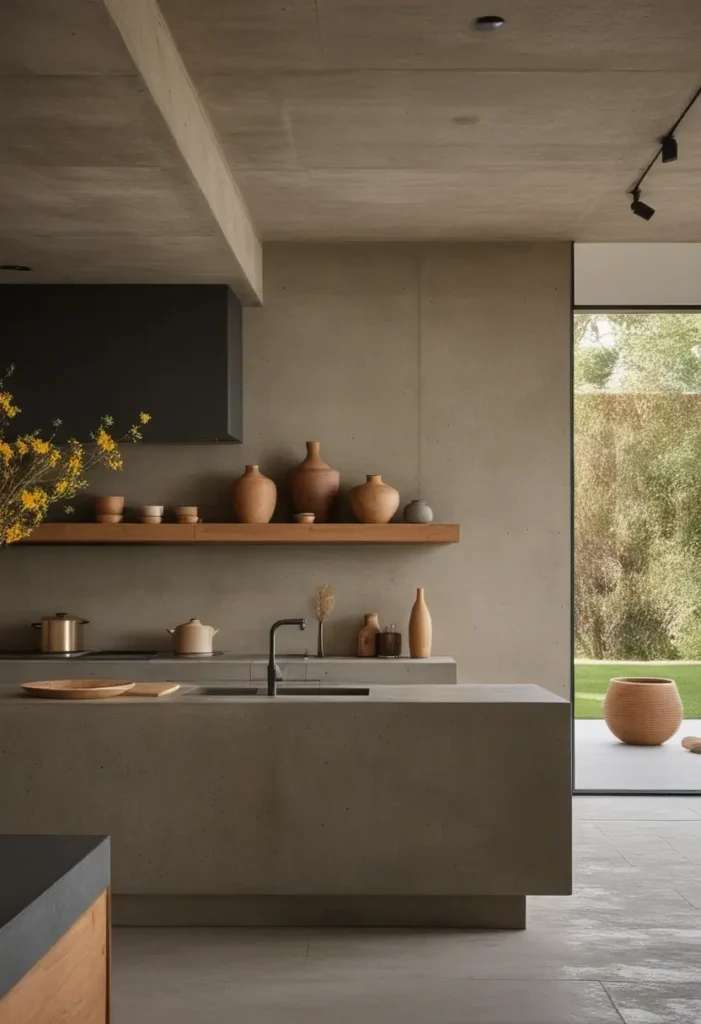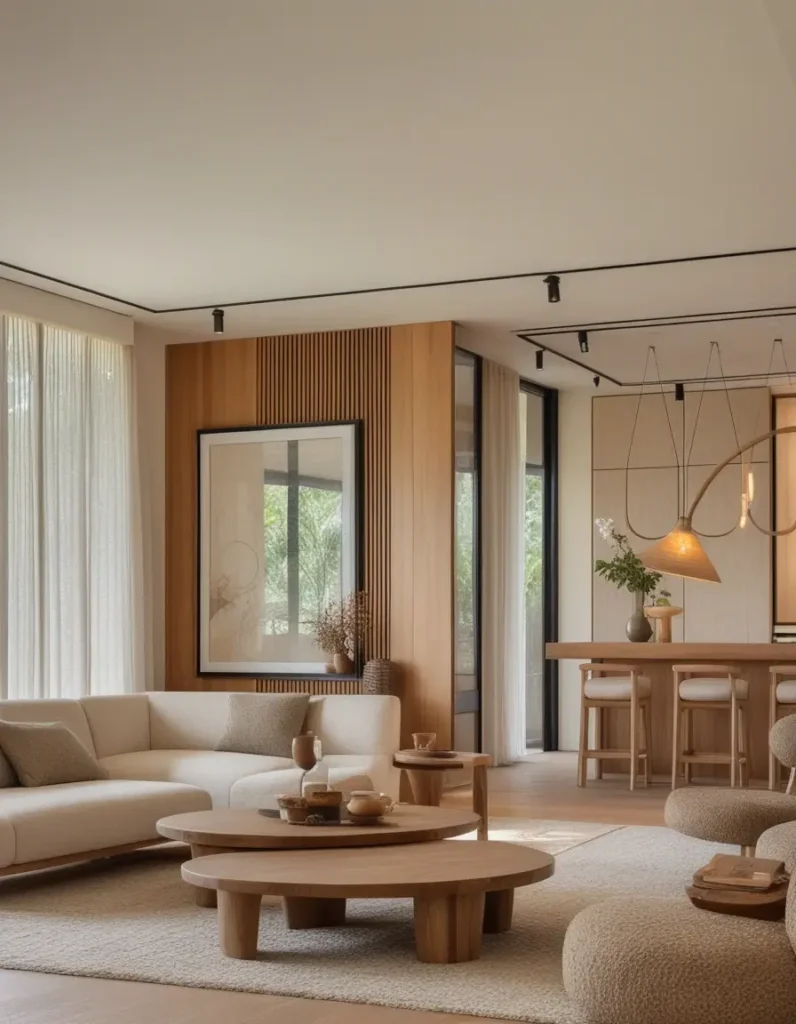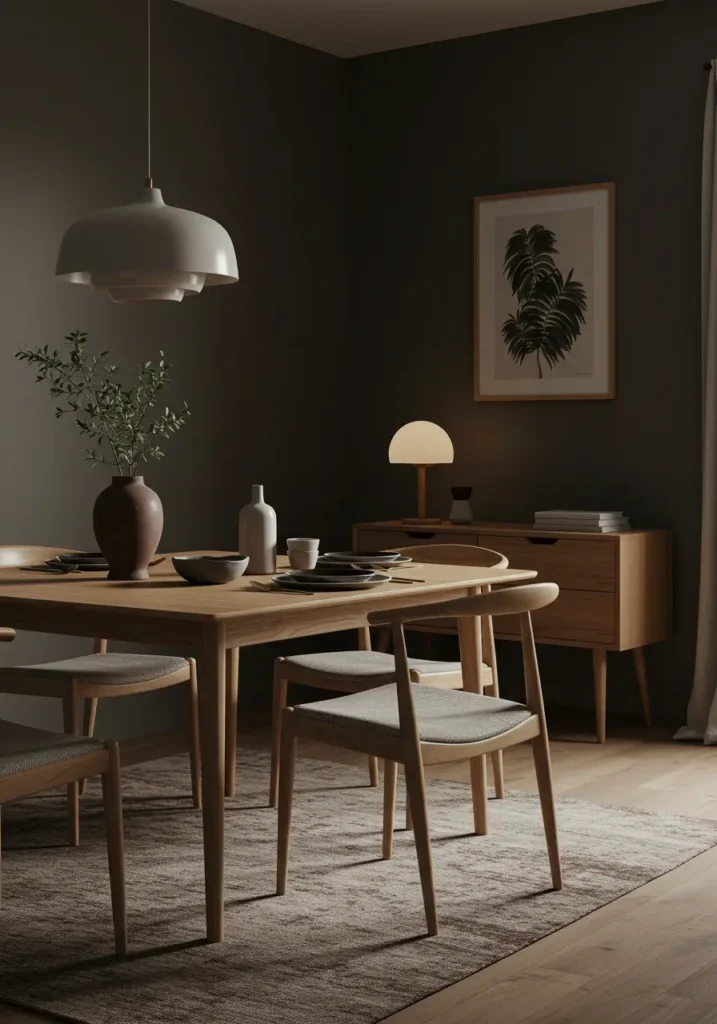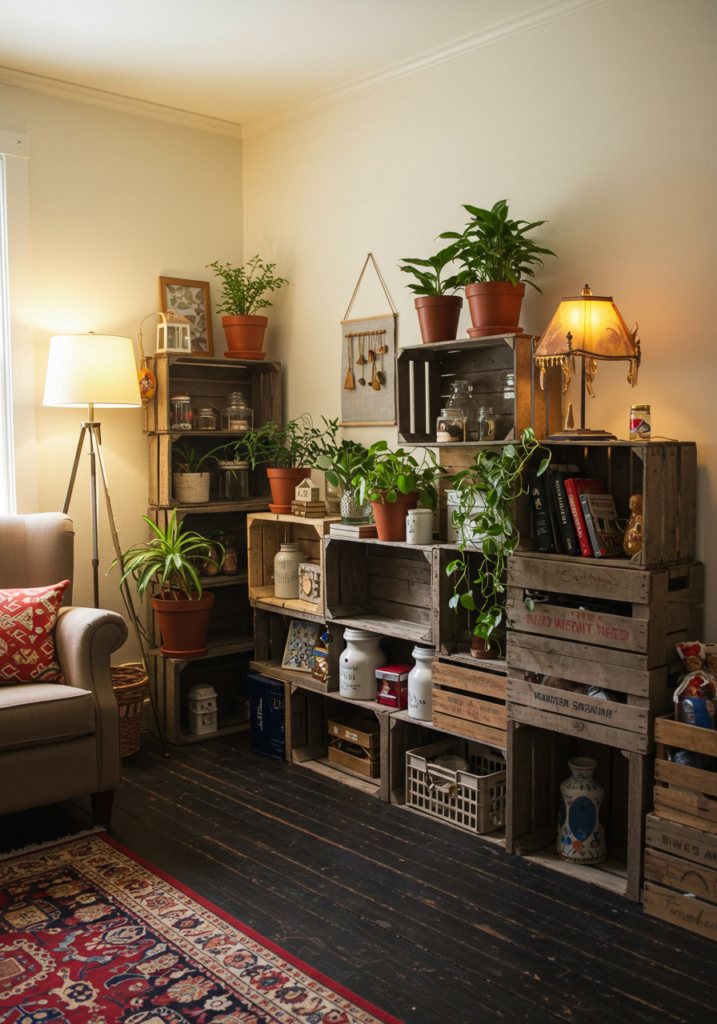
Wabi-Sabi Interior Design: Embracing Imperfection in the Home
Wabi-Sabi Interior Design is not just a design style; it’s a way of life deeply rooted in Japanese philosophy, encouraging us to embrace the beauty of imperfection and simplicity. At its core, Wabi-Sabi celebrates the authenticity of natural materials, the subtle beauty of wear and age, and the tranquility that comes from uncluttered, mindful spaces. Here’s a deep dive into what makes Wabi-Sabi Interior Design a captivating approach to modern living.

I. Introduction to Wabi-Sabi Philosophy
Wabi-Sabi, a concept inspired by Zen Buddhism and traditional Japanese culture, focuses on life’s transient and imperfect nature. The term “wabi” evokes a sense of rustic simplicity or understated elegance, often tied to the idea of living modestly and appreciating the small, humble beauties in life. “Sabi,” on the other hand, refers to the beauty that emerges with age, wear, and the natural patina of time. Combined, Wabi-Sabi teaches us to value the flaws, asymmetries, and evolving character of the spaces and objects we surround ourselves with.
This approach to interior design stands in stark contrast to Western ideals of perfection. Rather than striving for flawless, polished interiors, Wabi-Sabi encourages us to see beauty in uneven textures, irregular shapes, and the unique charm of aged items. It’s an invitation to slow down, observe, and connect with the present moment—a refreshing perspective in today’s fast-paced, consumer-driven world.
II. Key Principles of Wabi-Sabi Interior Design
Wabi-Sabi Interior Design blends minimalist principles with an appreciation for organic elements. This philosophy can be seen through four main design principles:
A. Aesthetics
- Natural and Earthy Elements: Wabi-Sabi spaces are infused with organic beauty. You’ll find materials like wood, stone, and bamboo that bring a raw, earthy quality into the home. These elements connect us to nature, grounding the space with an authentic, timeless feel.
- Asymmetry and Irregularity: Unlike the rigid symmetry often found in Western interiors, Wabi-Sabi embraces asymmetry. An uneven stack of books, a rough-hewn wooden table, or a handmade ceramic with a slight wobble adds character and authenticity, breaking free from the expectation of perfection.
- Rough and Unrefined Textures: Texture plays a huge role in Wabi-Sabi design. Rough surfaces, unpolished finishes, and natural imperfections bring a tactile warmth and realness to the environment. These surfaces encourage touch and interaction, making the home feel inviting rather than untouchable.
- Minimal and Uncluttered Spaces: Clutter is absent in Wabi-Sabi interiors, replaced by open space that allows each piece to be appreciated on its own. Uncluttered spaces foster a sense of peace, encouraging us to enjoy the simplicity and calmness of our surroundings.

B. Materials
Wabi-Sabi Interior Design focuses heavily on natural materials that age gracefully, transforming with time and use.
- Natural Materials (Wood, Stone, Clay, Bamboo): These materials are integral to Wabi-Sabi. Whether it’s a reclaimed wood table or a rough stone countertop, natural elements are central, as they bring warmth and authenticity to the space.
- Raw and Unfinished Surfaces: Surfaces are left unpolished to reveal their true form. You might find unglazed ceramics, unfinished wood, or raw stone surfaces that enhance the rugged, earthy character of the design.
- Handcrafted Items: Handcrafted objects are cherished for their unique, imperfect qualities. These items often carry the mark of their maker, such as slight variations or visible tool marks, giving them an irreplaceable sense of identity.
- Weathered and Aged Elements: Items that show signs of wear, like a timeworn leather chair or a faded fabric, are celebrated. Instead of viewing these objects as “used,” Wabi-Sabi views them as having a story—a history that adds to their charm.

III. Design Elements
In a Wabi-Sabi home, colors, textures, and finishes all work together to create a balanced, harmonious environment that is calming yet richly textured.
A. Color Palette
The color scheme in Wabi-Sabi Interior Design is understated, natural, and soft:
- Earth Tones: Shades of brown, beige, and muted green reflect the colors of nature and create a calming atmosphere.
- Muted and Natural Colors: Instead of vibrant hues, Wabi-Sabi favors subtle colors that blend seamlessly with natural surroundings. Think soft grays, clay reds, and gentle blues.
- Subtle Variations: Slight variations in color add depth without overwhelming the senses, making each wall, piece of furniture, or accessory feel slightly unique.
- Organic Pigments: Using paints and finishes made from organic materials enhances the natural vibe of the design, adding authenticity to the space.

B. Texture and Finish
Texture brings Wabi-Sabi interiors to life, creating a tactile experience that goes beyond aesthetics:
- Rough Ceramics: Handmade pottery with unglazed surfaces or uneven shapes adds a rustic, inviting feel. These imperfections offer beauty that machine-made items lack.
- Unpolished Woods: Wood is often left in its raw state or lightly finished to highlight its grain and texture, allowing each piece to feel connected to its original form.
- Natural Fiber Textiles: Soft linens, wool, and other natural fibers add a warm, cozy layer to the space. Textiles might be frayed or loosely woven, further enhancing the organic, unrefined look.
- Patinated Metals: Metals with a slight patina or tarnish contribute a subtle aged quality. Brass, copper, and iron, particularly when worn, enhance the timeless feel of Wabi-Sabi.
IV. Implementation in Modern Homes
Integrating Wabi-Sabi into your home is less about following strict rules and more about creating a space that feels genuine and deeply personal.
A. Furniture Selection
- Handcrafted Pieces: Opt for furniture that feels human-made, as handcrafted pieces carry a warmth and personality machine-made items often lack.
- Natural Materials: Choose tables, shelves, and other furniture items crafted from wood, stone, or bamboo to emphasize nature’s role in Wabi-Sabi Interior Design.
- Simple Forms: Avoid intricate designs and instead go for clean, simple lines that allow the material to shine through.
- Vintage or Aged Items: Incorporate vintage or second-hand furniture that already has some wear, adding a sense of history and continuity.

B. Decorative Approach
- Minimal Accessories: Keep decorations to a minimum. A few well-chosen items like a single vase or a handmade bowl bring more presence than cluttered shelves.
- Natural Elements (Plants, Stones): Bring in the outside world with potted plants, stones, or driftwood. These items embody Wabi-Sabi’s embrace of nature and add a living, organic element.
- Handmade Ceramics: A simple ceramic piece can serve as a powerful accent. Look for items that show the maker’s touch and feature unique, imperfect shapes.
- Intentional Empty Spaces: Empty spaces are intentional, not accidental. Rather than filling every corner, Wabi-Sabi design values the beauty of negative space, which brings balance and calm to the room.
V. Design Practices
For a true Wabi-Sabi space, the way you organize and maintain it matters just as much as your design choices.
A. Space Organization
- Decluttered Environments: Keep spaces free from excess, as clutter detracts from the sense of calm.
- Functional Layouts: Arrange furniture with purpose and thoughtfulness, creating an intuitive flow that’s pleasing and practical.
- Negative Space Appreciation: Embrace empty spaces, allowing room for reflection and calm. Negative space enhances the simplicity and purity that define Wabi-Sabi.
- Natural Light Emphasis: Maximize natural light whenever possible, as it brings a soft, gentle glow that enhances the natural materials and textures in the room.

B. Maintenance
- Embracing Natural Aging: Rather than hiding signs of use, Wabi-Sabi welcomes them. Scratches, dents, and wear are celebrated as signs of a life well-lived.
- Mindful Repair (Kintsugi Principle): If something breaks, consider repairing it in a way that highlights the repair rather than hiding it. Kintsugi, the Japanese art of repairing pottery with gold, embodies this principle.
- Seasonal Adaptations: Allow the design to evolve with the seasons, adding or removing elements to reflect nature’s cycles.
- Sustainable Practices: Wabi-Sabi supports sustainability, encouraging us to appreciate what we have, reduce consumption, and cherish items over time.
In Wabi-Sabi Interior Design, every scratch, every uneven edge, and every worn surface has a story to tell, offering warmth, authenticity, and a sense of calm. By creating spaces that honor these principles, we create a home that is not only beautiful but also soulful, where we can reconnect with nature and ourselves.




Pingback: Boho Scandi Bedroom Design: Tips for a Chic Home Fusion -
Pingback: Wallpaper for Bedroom: Choosing the Perfect Style -